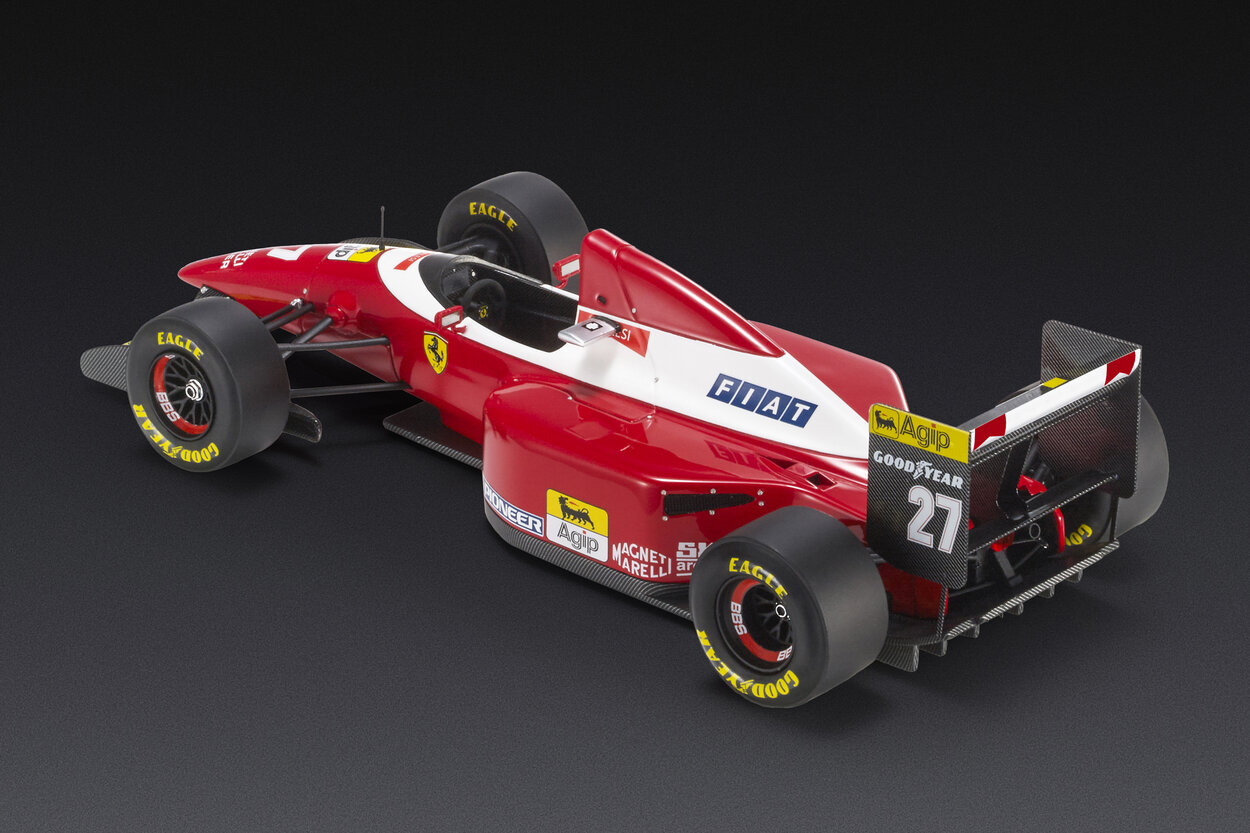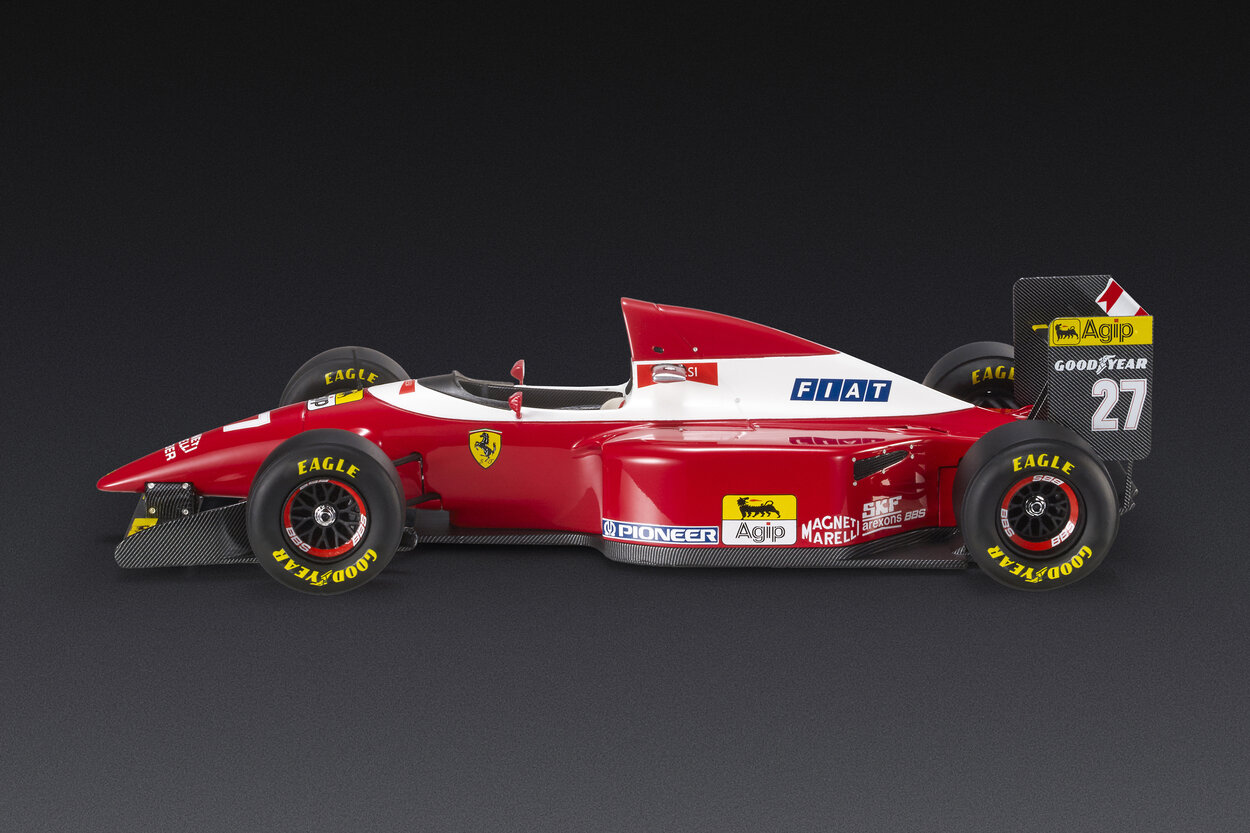Ferrari F93A
Yet another transitional car. Still no victories for the Maranello team. The reconstruction requires time. Luca di Montezemolo, at the helm since the fall of 1991, is organizing the Ferrari renaissance, which begins to take shape when, on July 1, 1993, Jean Todt joins the team, becoming the new head of Ferrari’s Sporting Management.
The F93A is a much more conventional car compared to the previous season’s F92A, which featured somewhat futuristic solutions but failed to bring home notable results. The project is led by Jean-Claude Migeot, alongside John Barnard, whom the newly appointed president Montezemolo involves once again in an attempt to quickly find a solution – a goal that won’t be achieved with the F93A or with Barnard, who will soon leave Ferrari once again.

Drivers:
Jean Alesi: The French driver is the sole survivor of the disastrous 1992 season, disastrous not due to the fault of the drivers, although one of them pays the price for all. His best results of the 1993 season include third place in Monaco and, notably, second place in Monza. Two fourth places at Estoril and Adelaide are the only other races where Alesi manages to finish in the points. Nine retirements due to the fragility of the F93A. He finishes sixth overall in the Drivers’ Championship standings.
Gerhard Berger: The Austrian returns to Ferrari after three seasons in the late 1980s. He will remain in Maranello for another three seasons, and although he does not truly reap the rewards of the reconstruction, he plays a significant part in it. Right from the start, he establishes an excellent relationship with his teammate, who is young and fast but respects Gerhard’s class and experience. The best result of his first season with the Prancing Horse is third place at the Hungaroring.
Our model cars:

Gone are the double floor and the sidepods detached from the rest of the car with the large droplet-shaped air intakes of the previous car. The only concept retained from that car is the raised nose. The sidepods of the car are redesigned, with large air intakes to channel air to the 65° V12 engine with a displacement of 3.5 liters. It is the only Ferrari car with active suspension.
In a retro gesture likely aimed at appeasing the racing gods, the F93A reintroduces white into the car’s livery after many years. A wide band of this color longitudinally cuts across the car from the front of the cockpit to the end of the engine cover. However, the gods seem to look the other way, and the F93A will not achieve more than three podium finishes, instead accumulating a long series of retirements.

